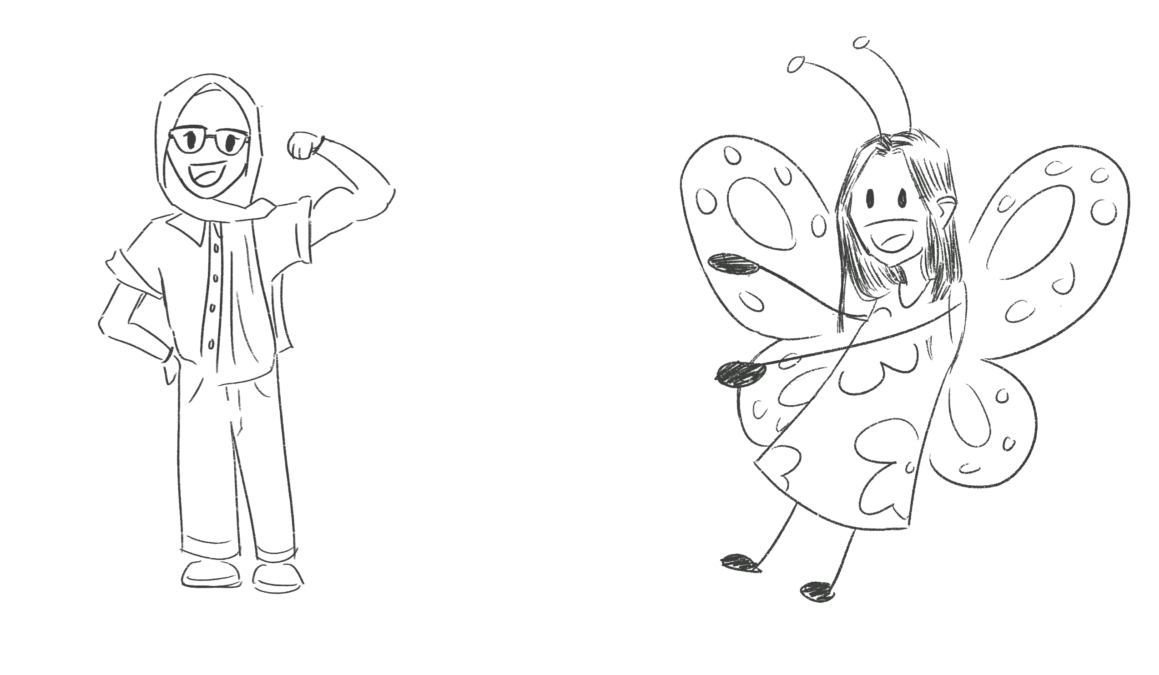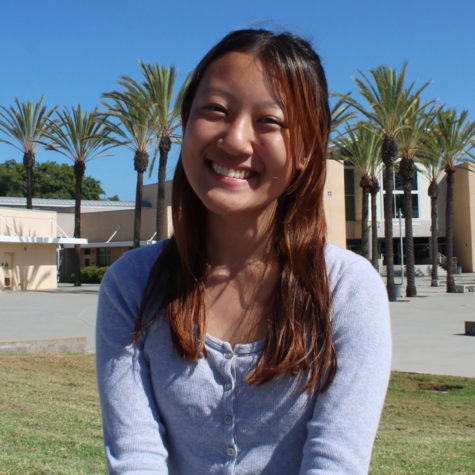Social Butterfly: A Classmate’s Comfort
November 18, 2022

Two weeks ago, I couldn’t escape it. It seemed that in every essay I read in APEL somebody’s mom, wife, or sister had cancer. The Washington Post reminded me on my Instagram story to get a mammogram. Even while I watched TV, I was encouraged to donate to St. Jude’s on channel 101 and educated about the history of the symbolic pink ribbon for Breast Cancer Awareness on channel 127.
Two weeks ago, I colored my loved one’s hair with gloved hands in a bathroom, in preparation for the photos we would take together before the locks I so lovingly lathered with “non-toxic box dye” would begin to fall out.
Two weeks ago and two hours before said pictures were scheduled to be taken, I talked to Nasmah Hamid (12).
The sky was a tint of baby blue and the sun was beaming—almost blinding. Nasmah sat on a wooden picnic table, wearing a pale pink button-up and a matching hijab, and she immediately smiled; a warm smile with eyes that gleamed like that day’s sun.
On Dec. 6, 2016, at school in her plaid Christmas shirt and bow clipped to her hair, Nasmah had a spelling bee and drank hot chocolate to celebrate the holidays. She was checked out of school early that day, relieved that her doctor finally knew why she was experiencing excruciating pain in her shins.
They told her that they found lymphoma cells—a phrase she didn’t understand—and that they were going to refer her to an oncologist—a word she also didn’t understand. The severity of her diagnosis only dawned on her when she saw the “Cancer and Blood Disorder” department sign at her oncologist’s office.
When she began treatment for her stage three lymphoblastic lymphoma, she writhed and fought against the injection of treatment into her portacath. Two nurses had to pin her down the first few times—a traumatizing experience for her.
The side effects of chemotherapy were devastating. The most difficult to cope with was the hair loss. She told herself that “it’s just hair” and that “it’s going to grow back.” It was easy to say that until her hair began to leave a trail behind her as she walked around her house, or when she would wake up in the morning to see clumps of hair on her pillow.
When she told me that, my eyes began to water. I thought about my loved one, the bathroom, and the hair dye, but most of all, I thought of Nasmah’s strength.
“I tried to be strong because it’s a matter of life or death,” she said. “Some days I was not strong, some days I was.”
Two weeks ago, it was not just a friend or family member’s words that brought me comfort, it was an initial stranger; it was Nasmah. From her, I learned that there’s no formula for strength, besides positive thinking and looking forward to the end of treatment. If there was a more immediate, straightforward answer, I’d move mountains to obtain it. For now, from what Nasmah showed me, all I can do is hope that my loved one and I have the strength on some days, hopefully most days, to get through this.


